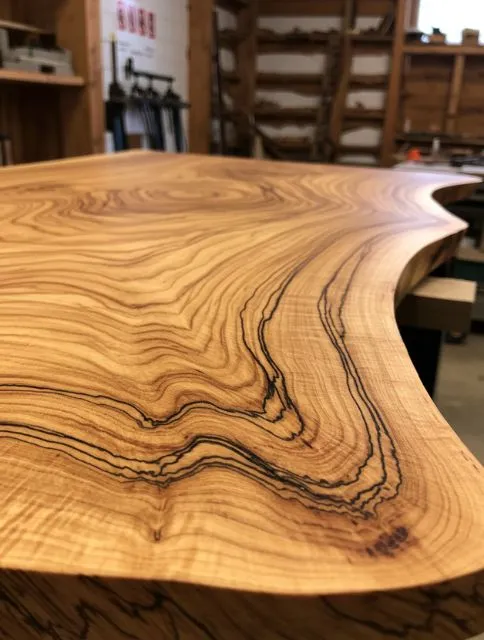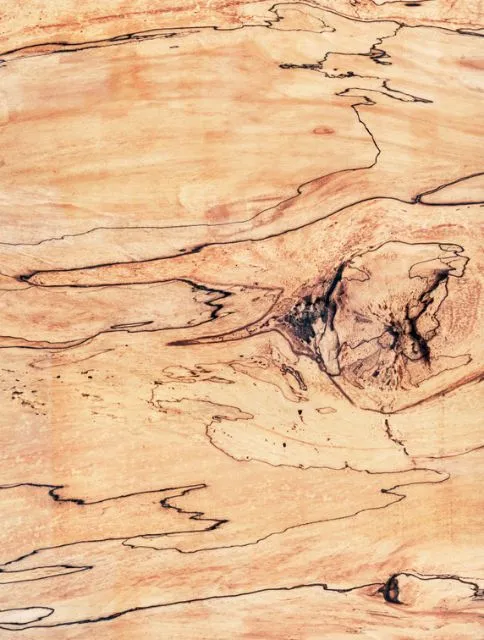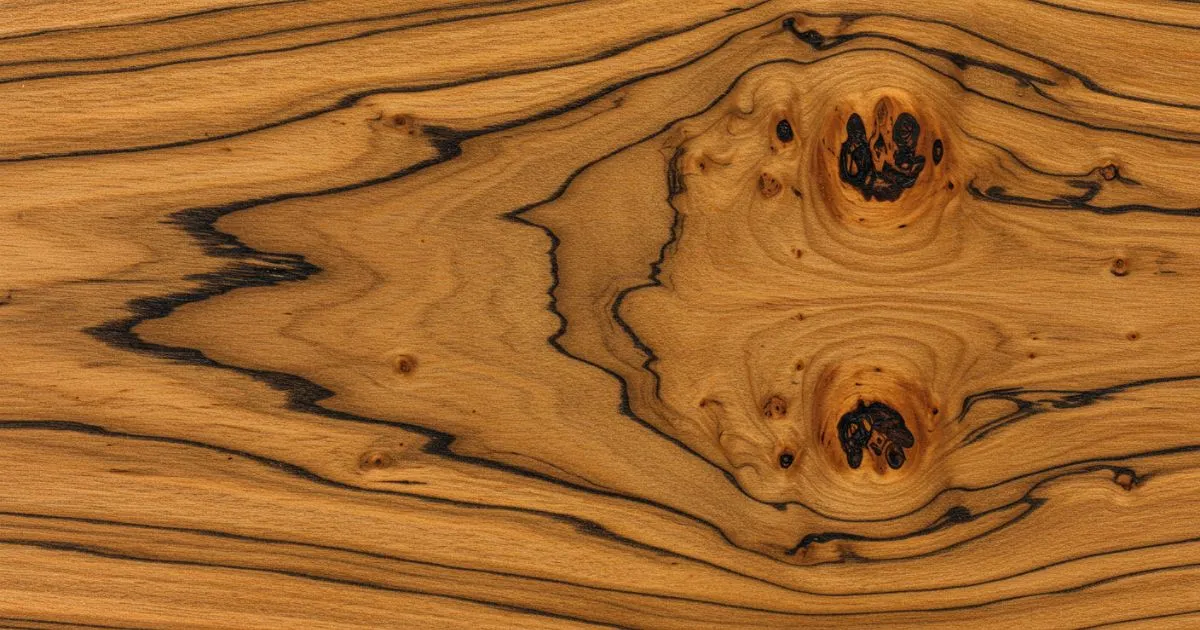Spalted Maple: 5 Amazing Facts You Need to Know
You might have seen unique wood patterns that grab your attention. Spalted Maple is one of the most striking examples. It gets its distinctive look from the spalting process. This process uses fungi and bacteria to create colors and patterns that woodworkers love.
Spalted Maple is more than just its looks. There are many interesting facts about it. In this article, we’ll share five amazing facts. These will help you appreciate it even more.
Table of Contents
Key Takeaways
- Discover the unique characteristics of Spalted Maple
- Learn about the spalting process and its effects on the wood
- Explore the uses and applications of This wood
- Understand the factors that affect the quality of Spalted Maple
- Gain insights into the craftsmanship involved in working with Spalted Maple
What Is Spalted Maple?
It is a wood type changed by nature through spalting. This process uses fungi to create unique patterns and colors. Each piece is truly one-of-a-kind.
So, what makes this wood so unique? It’s the mix of natural decay and special processing conditions.
The Science Behind Wood Spalting
Wood spalting happens when fungi break down the wood’s cells. This creates new compounds that show as patterns and colors. The science is complex, with different fungi and conditions playing a role.
The fungi used can change the wood’s look. Some fungi stain the wood, while others make patterns through their growth.
Identifying Characteristics of Spalted Maple
Spalted Maple stands out with its unique looks. You’ll see colors from deep blacks to bright blues and greens. The patterns can range from subtle streaks to bold, swirling designs.
To spot it, look for these special patterns and colors. They come from the spalting process.
How Spalted Maple Differs from Regular Maple
The main difference is spalting. Regular Maple looks more uniform, without the unique patterns and colors of spalting.
| Characteristics | Spalted Maple | Regular Maple |
|---|---|---|
| Color | Varied, with unique patterns | Uniform, typically light |
| Pattern | Distinctive, often swirling | Minimal, straight grain |
| Process | Altered by fungi | Natural, unaltered |
The Natural Process of Spalting
It’s striking patterns come from a natural process. This involves fungi and certain environmental conditions. It turns ordinary maple wood into a unique and visually striking material.
Fungal Activity and Wood Decomposition
Fungal activity drives the spalting process. Certain fungi colonize the wood, breaking it down. This creates the distinctive patterns and colors of Spalted Maple.
The decomposition process involves the fungi consuming the wood’s cellular contents. This leads to unique pigmentation and figure patterns.
Environmental Conditions for Spalting
For spalting to happen naturally, specific conditions are needed. These include enough moisture, the right temperatures, and oxygen. Moisture content is crucial for fungal growth. Wood with higher moisture content is more likely to spalt.
Timeline of the Spalting Process
The spalting timeline varies based on several factors. These include the type of fungi, environmental conditions, and the wood’s characteristics. It can take from a few months to several years.
Understanding this timeline helps woodworkers and craftsmen predict and influence the outcome.
| Factor | Influence on Spalting | Typical Range |
|---|---|---|
| Moisture Content | Facilitates fungal growth | 30-50% |
| Temperature | Affects fungal activity rate | 40°F – 80°F |
| Oxygen Availability | Essential for fungal respiration | Variable |
Amazing Fact #1: Spalted Maple Is Created by Fungi
Spalted Maple’s striking patterns come from fungi. It’s not just natural decay. It’s the result of maple wood and fungi working together.
Types of Fungi That Create Spalting
Many fungi cause the spalting effect in maple wood. White rot fungi, soft rot fungi, and blue stain fungi all play a part. Each fungus adds its own touch, leading to various patterns and colors.
The Controlled Decay Process
Spalting is a controlled wood decay. Fungi break down the wood, making unique patterns and colors. The decay depends on moisture, temperature, and oxygen levels.
White Rot Fungi Effects
White rot fungi are key in spalting. They break down lignin, leaving cellulose-rich material. This makes the wood appear white or light-colored, creating striking zones.
Zone Lines and Pigmentation
Different fungi create zone lines in the wood. These lines and the pigmentation from fungi make Spalted Maple unique. Each piece has its own colors and patterns.
Spalted Maple’s features include:
- Unique patterns from fungi
- Varied colors from different fungi
- Zone lines marking decay areas
Knowing how fungi create Spalted Maple helps us see its natural beauty and uniqueness.
Amazing Fact #2: Each Piece of Spalted Maple Is Unique
This wood is special because each piece has its own patterns and colors. This makes every piece unique. The wood and fungi interaction creates these unique features.
Looking at It, you’ll see cool patterns from the fungi. These can be small lines or big, swirling designs.
Pattern Variations in Spalted Maple
Spalted Maple shows many different patterns, like:
- Fine, thread-like lines
- Broad, swirling patterns
- Intricate, web-like designs
These patterns are not just pretty. They also make each piece special.
Color Diversity in Spalted Wood
It also has a wide range of colors. You might see:
- Deep, rich browns
- Vibrant, blue-gray tones
- Soft, creamy whites
Common Color Combinations
Some common colors in Spalted Maple include:
- Dark brown and light gray
- Creamy white with blue undertones
Rare Pattern Formations
Occasionally, Spalted Maple shows rare patterns. You might see “spider web” or “bird’s eye” patterns. These are very sought after by woodworkers and collectors.
With its unique patterns and colors, This wood offers endless creative possibilities. Each piece is truly one-of-a-kind.
Amazing Fact #3: Spalted Maple Was Once Considered Waste
It was once thrown away, but now it’s highly sought after. This change shows how our views on wood have shifted. We now see the beauty in its unique patterns.
Historical Perspectives on Spalted Wood
Woodworkers used to see this wood as bad wood. They thought its colors and patterns were signs of decay. This made it less popular for quality projects.
From Discarded to Highly Valued
But, as woodworkers started to see its beauty, its value grew. The patterns and colors that were once flaws are now loved for their uniqueness. This made Spalted Maple a top choice for fine woodworking.
Modern Appreciation in Fine Woodworking
Now, Spalted Maple is celebrated for its beauty in fine woodworking. Woodworkers and artisans love it for making unique pieces. It shows a growing trend in woodworking to value the natural beauty of wood.
The journey of This amazing wood from waste to a highly valued material shows how craftsmanship and beauty in wood have evolved.
Amazing Fact #4: Spalted Maple Can Be Artificially Induced
Spalted maple isn’t just a natural thing. It can also be made artificially. Woodworkers and craftsmen can create unique patterns in maple wood by changing the conditions that cause spalting.
Methods for Inducing Spalting
There are a few ways to make maple wood spalt artificially. These include:
- Controlling the environment to promote fungal growth
- Introducing specific types of fungi to the wood
- Using chemical treatments to enhance or accelerate the spalting process
Each method needs careful thought about the right conditions for spalting. This includes things like moisture, temperature, and oxygen.
Laboratory vs. Workshop Techniques
Artificial spalting can happen in labs or workshops. Labs use controlled environments for consistent results. Workshops, on the other hand, let woodworkers create unique pieces with simpler tools.

Ethical Considerations in Artificial Spalting
Artificial spalting raises some ethical questions. There’s worry about the impact on the environment from using non-native fungi. Woodworkers must find a balance between creativity and responsible practices.
Knowing about artificial spalting’s methods, techniques, and ethics helps you decide if it’s right for your projects.
Amazing Fact #5: Working with Spalted Maple Requires Special Techniques
Spalted Maple is beautiful but tricky to work with. It needs careful handling and special woodworking skills. You’ll face unique challenges that require special approaches.
Challenges in Woodworking with Spalted Maple
This type of wood is unpredictable. The spalting process can make some areas soft and prone to damage. It’s key to check each piece carefully before starting your project.
The wood’s patterns and colors can also be tricky. To get consistent results, you must adapt your techniques to the wood’s unique features.
Tools and Techniques for Best Results
For the best results, use sharp, high-quality tools. Dull tools can damage the wood, making it hard to achieve a good finish.
Choose techniques that protect the wood. For example, a sharp router bit helps avoid wood tear. A stabilization process also makes the wood last longer.
| Tool/Technique | Purpose | Benefit |
|---|---|---|
| Sharp Router Bit | Preventing wood tear | Smooth finish |
| Stabilization Process | Enhancing durability | Increased longevity |
| High-Quality Sandpaper | Smoothing the surface | Improved finish quality |
Stabilization Methods for Softer Areas
Stabilizing Spalted Maple is vital, mainly in softer areas. A wood stabilizer can be applied before or after the project. It helps protect the wood.
By knowing the challenges and using the right techniques, you can bring out Spalted Maple’s beauty. This way, you can create unique and beautiful pieces.
Popular Uses for Spalted Maple in Woodworking
It is loved for its beautiful looks and strong build. It’s great for making furniture, musical instruments, and decorative items. You can see its beauty in many woodworking projects, from useful items to art pieces.
Furniture Applications
It is a favorite for furniture making. It’s durable and looks amazing. You’ll find it in tables, chairs, and cabinets, showing off its unique patterns. Its strength means the furniture lasts a long time.
Musical Instruments
It is also popular for making musical instruments like guitars and violins. Its patterns add an artistic touch to these instruments. This makes each one special and unique.
Decorative and Artistic Uses
It is used in many decorative and artistic ways. It’s seen in turning projects, accent pieces, and inlays. These highlight its beauty.
Turning Projects
Woodturners love this type of wood for making bowls, vases, and more. The wood’s patterns and colors make each piece unique. You can try different techniques to show off This wood’s beauty.
Accent Pieces and Inlays
Spalted Maple’s unique look is perfect for accent pieces and inlays. It adds beauty to furniture, cabinets, and other wooden items. This makes them stand out more.

| Application | Description | Benefits |
|---|---|---|
| Furniture Making | Crafting tables, chairs, cabinets | Durability, unique patterns |
| Musical Instruments | Guitars, violins | Tonal quality, aesthetic appeal |
| Decorative Uses | Turning projects, accent pieces, inlays | Unique patterns, artistic touch |
How to Find and Purchase Quality Spalted Maple
Finding a good quality means knowing where to look and what to look for. Whether you’re a pro or a beginner, the right piece of this wood can make your project stand out.
Sourcing Options: Specialty Suppliers vs. DIY
You can buy Spalted Maple from specialty suppliers or try making it yourself. Suppliers offer a wide range of products, including figured lumber. Making it yourself lets you control the spalting, but you need to know about mycology and woodworking.
What to Look for When Buying
When buying this Maple, check for stability and usability. Look for minimal cracking and checking. The spalting pattern is also key; unique patterns can increase the wood’s value.
Price Ranges and Value Factors
Spalted Maple prices vary based on quality, size, and stability. Here’s a general price guide:
| Grade | Price Range per Board Foot | Characteristics |
|---|---|---|
| Low Grade | $5-$15 | Minimal spalting, potential for significant cracking |
| Mid Grade | $15-$30 | Moderate spalting, some figure, moderate stability |
| High Grade | $30-$50+ | Excellent spalting, high figure, good stability |
Evaluating Stability and Usability
Check the wood’s stability by looking for warping or cracking. A dull sound when tapping may indicate internal checking.
Assessing Pattern Quality
The spalting pattern greatly affects the wood’s value. Unique patterns like blotchy or spiderweb spalting can increase prices. The contrast between spalted and unspalted areas also adds to the wood’s appeal.
Understanding these factors helps you find a good quality . This wood can greatly enhance your woodworking projects.
Conclusion
You now know the fascinating story of Spalted Maple. This wood has won the hearts of many woodworkers and craftspeople. Its unique qualities make it a highly sought-after material.
It is created by fungi, making each piece unique. Once seen as waste, it’s now prized for its beauty and character. You can even try to induce spalting, but working with this wood needs special techniques.
Whether you’re a seasoned woodworker or just starting, Spalted Maple offers endless creative possibilities. It’s used in furniture making and musical instruments. Its unique patterns and colors make it perfect for decorative and artistic projects.
Exploring Spalted Maple, you’ll see the amazing connection between nature and craftsmanship. This wood is truly extraordinary.
FAQ
What is Spalted Maple?
It is a maple wood type. It has been partially decayed by fungi. This creates unique patterns and colors.
How is Spalted Maple created?
It’s made through a natural process. Fungi and wood decomposition play a role. This can happen naturally or be induced artificially.
What types of fungi are involved in creating Spalted Maple?
Many fungi, like white rot fungi, are involved. They cause different effects and patterns.
Is Spalted Maple more expensive than regular Maple?
Yes, it’s often more valuable and expensive. Its unique look and working challenges add to its cost.
Can Spalted Maple be used for making furniture?
Yes, it’s a favorite for furniture making. Its distinctive patterns make for beautiful, unique pieces.
How do I work with Spalted Maple?
Working with it needs special techniques. Use sharp tools and stabilize softer areas. Be mindful of its unique traits.
Where can I buy Spalted Maple?
You can find it at specialty wood suppliers or online. You can also try creating it yourself.
What should I look for when buying Spalted Maple?
Look for stability and usability. Check the pattern quality. Consider price and the supplier’s reputation.
Can Spalted Maple be used for making musical instruments?
Yes, it’s used in musical instruments. It’s valued for its look and unique sound.
How do I care for Spalted Maple products?
Keep it away from too much moisture. Apply a protective finish to keep it looking good.

